Non-Aligned Movement
The Non-Aligned Movement (NAM) is a forum of 120 developing world states that are not formally aligned with or against any major power bloc. After the United Nations, it is the largest grouping of states worldwide.[2][4]
Non-Aligned Movement (NAM) | |
|---|---|
 Logo
| |
 Countries of the Non-Aligned Movement | |
| Coordinating Bureau | New York City, New York, U.S.[1] |
| Membership[2] |
|
| Leaders | |
• Principal decision- making organ | Conference of Heads of State or Government of Non-Aligned Countries[3] (2019–22) |
| Establishment | 1 September 1961 as the Conference of Heads of State or Government of Non-Aligned Countries |
Drawing on the principles agreed at the Bandung Conference in 1955, the Non-Aligned Movement was established in 1961 in Belgrade, SR Serbia, Yugoslavia through an initiative of the Indian Prime Minister Jawaharlal Nehru, Ghanaian President Kwame Nkrumah, Indonesian President Sukarno, Egyptian President Gamal Abdel Nasser and Yugoslav President Josip Broz Tito.[5][6] This led to the first Conference of Heads of State or Governments of Non-Aligned Countries.[7] The term non-aligned movement first appears in the fifth conference in 1976, where participating countries are denoted as "members of the movement".
The purpose of the organization was enumerated by Fidel Castro in his Havana Declaration of 1979 as to ensure "the national independence, sovereignty, territorial integrity and security of non-aligned countries" in their "struggle against imperialism, colonialism, neo-colonialism, racism, and all forms of foreign aggression, occupation, domination, interference or hegemony as well as against great power and bloc politics."[8][9] The countries of the Non-Aligned Movement represent nearly two-thirds of the United Nations' members and contain 55% of the world population. Membership is particularly concentrated in countries considered to be developing or part of the Third World, though the Non-Aligned Movement also has a number of developed nations.
Although many of the Non-Aligned Movement's members were actually quite closely aligned with one or another of the superpowers (such as the People's Republic of China, an observer, or the Soviet Union, not participating in the Non-Aligned Movement), the movement still maintained cohesion throughout the Cold War, even despite several conflicts between members which also threatened the movement. In the years since the Cold War's end, it has focused on developing multilateral ties and connections as well as unity among the developing nations of the world, especially those within the Global South.
History
Origins and the Cold War
Drawing on the principles agreed at the Bandung Conference in 1955, the Non-Aligned Movement as an organization was founded on the Brijuni islands in Yugoslavia in 1956 and was formalized by signing the Declaration of Brijuni on 19 July 1956. The Declaration was signed by Yugoslavia's president, Josip Broz Tito, India's first prime minister Jawaharlal Nehru and Egypt's second president, Gamal Abdel Nasser. One of the quotations within the Declaration is "Peace can not be achieved with separation, but with the aspiration towards collective security in global terms and expansion of freedom, as well as terminating the domination of one country over another". According to Rejaul Karim Laskar, an ideologue of the Congress party which ruled India for most part of the Cold War years, the Non-Aligned Movement arose from the desire of Jawaharlal Nehru and other leaders of the newly independent countries of the third world to guard their independence "in face of complex international situation demanding allegiance to either two warring superpowers ".[10]
The Movement advocates a middle course for states in the developing world between the Western and Eastern Blocs during the Cold War. The phrase itself was first used to represent the doctrine by Indian diplomat V. K. Krishna Menon in 1953, at the United Nations.[11]
But it soon after became the name to refer to the participants of the Conference of Heads of State or Government of Non-Aligned Countries first held in 1961. The term "non-alignment" was established in 1953 at the United Nations. Nehru used the phrase in a 1954 speech in Colombo, Sri Lanka. In this speech, Zhou Enlai and Nehru described the Five Principles of Peaceful Coexistence to be used as a guide for Sino-Indian relations called Panchsheel (five restraints); these principles would later serve as the basis of the Non-Aligned Movement. The five principles were:
- Mutual respect for each other's territorial integrity and sovereignty.
- Mutual non-aggression.
- Mutual non-interference in domestic affairs.
- Equality and mutual benefit.
- Peaceful co-existence.
A significant milestone in the development of the Non-Aligned Movement was the 1955 Bandung Conference, a conference of Asian and African states hosted by Indonesian president Sukarno, who gave a significant contribution to promote this movement. Bringing together Sukarno, U Nu, Nasser, Nehru, Tito, Nkrumah and Menon with the likes of Ho Chi Minh, Zhou Enlai, and Norodom Sihanouk, as well as U Thant and a young Indira Gandhi, the conference adopted a "declaration on promotion of world peace and cooperation", which included Zhou Enlai and Nehru's five principles, and a collective pledge to remain neutral in the Cold War. Six years after Bandung, an initiative of Yugoslav president Josip Broz Tito led to the first Conference of Heads of State or Government of Non-Aligned Countries, which was held in September 1961 in Belgrade.[12] The term non-aligned movement appears first in the fifth conference in 1976, where participating countries are denoted as members of the movement.[13]
At the Lusaka Conference in September 1970, the member nations added as aims of the movement the peaceful resolution of disputes and the abstention from the big power military alliances and pacts. Another added aim was opposition to stationing of military bases in foreign countries.[14]
Some members were involved in serious conflicts with other members (e.g. India and Pakistan, Iran and Iraq).
Cuba's Role
In the 1970s, Cuba made a major effort to assume a leadership role in the world's nonalignment movement, which represented over 90 Third World nations. Cuban combat troops in Angola greatly impressed fellow non-aligned nations.
Cuba also established military advisory missions and economic and social reform programs. The 1976 world conference of the Non-Aligned Movement applauded Cuban internationalism, "which assisted the people of Angola in frustrating the expansionist and colonialist strategy of South Africa's racist regime and its allies." The next nonaligned conference was scheduled for Havana in 1979, to be chaired by Fidel Castro, with his becoming the de facto spokesman for the Movement. The conference in September 1979 marked the zenith of Cuban prestige. Most, but not all, attendees believed that Cuba was not aligned with the Soviet camp in the Cold War.[15] However, in December 1979, the Soviet Union intervened in Afghanistan's civil war. At the time, Afghanistan was also an active member of the Nonaligned Movement. At the United Nations, Nonaligned members voted 56 to 9, with 26 abstaining, to condemn the Soviet Union. Cuba in fact was deeply in debt financially and politically to Moscow and voted against the resolution. It lost its reputation as nonaligned in the Cold War. Castro, instead of becoming a high-profile spokesman for the Movement, remained quiet and inactive, and in 1983 leadership passed to India, which had abstained on the UN vote. Cuba lost its bid to become a member of the United Nations Security Council and its ambitions for a role in global leadership had totally collapsed.[16] More broadly the Movement was deeply split over the Soviet–Afghan War in 1979. Although Moscow's allies supported the Soviet intervention, other members of the movement (particularly predominantly Muslim states) condemned it.[17]
Post-Cold War
Because the Non-Aligned Movement was formed as an attempt to thaw out the Cold War,[14] it has struggled to find relevance since the Cold War ended. After the breakup of Yugoslavia, a founding member, its membership was suspended[18] in 1992 at the regular Ministerial Meeting of the Movement, held in New York during the regular yearly session of the General Assembly of the United Nations.[19][20] The successor states of the Socialist Federal Republic of Yugoslavia have expressed little interest in membership, though Serbia and Bosnia and Herzegovina have observer status. In 2004, Malta and Cyprus ceased to be members and joined the European Union. Belarus is the only member of the Movement in Europe. Azerbaijan and Fiji are the most recent entrants, joining in 2011. The applications of Bosnia and Herzegovina and Costa Rica were rejected in 1995 and 1998, respectively.[20]
Since the end of the Cold War, the Non-Aligned Movement has been forced to redefine itself and reinvent its purpose in the current world system. A major question has been whether any of its foundational ideologies, principally national independence, territorial integrity, and the struggle against colonialism and imperialism, can be applied to contemporary issues. The movement has emphasised its principles of multilateralism, equality, and mutual non-aggression in attempting to become a stronger voice for the global South, and an instrument that can be used to promote the needs of member nations at the international level and strengthen their political leverage when negotiating with developed nations. In its efforts to advance Southern interests, the movement has stressed the importance of cooperation and unity amongst member states,[21] but as in the past, cohesion remains a problem since the size of the organisation and the divergence of agendas and allegiances present the ongoing potential for fragmentation. While agreement on basic principles has been smooth, taking definitive action vis-à-vis particular international issues has been rare, with the movement preferring to assert its criticism or support rather than pass hard-line resolutions.[22]
The movement continues to see a role for itself, as in its view, the world's poorest nations remain exploited and marginalised, no longer by opposing superpowers, but rather in a uni-polar world,[23] and it is Western hegemony and neo-colonialism that the movement has really re-aligned itself against. It opposes the foreign occupation, interference in internal affairs and aggressive unilateral measures, but it has also shifted to focus on the socio-economic challenges facing member states, especially the inequalities manifested by globalization and the implications of neo-liberal policies. The Non-Aligned Movement has identified economic underdevelopment, poverty, and social injustices as growing threats to peace and security.[24]
The 16th NAM summit took place in Tehran, Iran, from 26 to 31 August 2012. According to Mehr News Agency, representatives from over 150 countries were scheduled to attend.[25] Attendance at the highest level includes 27 presidents, two kings and emirs, seven prime ministers, nine vice presidents, two parliament spokesmen and five special envoys.[26] At the summit, Iran took over from Egypt as Chair of the Non-Aligned Movement for the period 2012 to 2015.[27] and latest one held in Venezuela 2016.[28][29]
In 2019, Colombia and Peru suspended their participation in the Movement under the presidency of Venezuela because their governments did not recognize the legitimacy of Nicolás Maduro's government.
Organizational structure and membership
The movement stems from a desire not to be aligned within a geopolitical/military structure and therefore itself does not have a very strict organizational structure.[3] Some organizational basics were defined at the 1996 Cartagena Document on Methodology[30] The Summit Conference of Heads of State or Government of Non-Aligned States is "the highest decision making authority". The chairmanship rotates between countries and changes at every summit of heads of state or government to the country organizing the summit.[30]
Requirements for membership of the Non-Aligned Movement coincide with the key beliefs of the United Nations. The current requirements are that the candidate country has displayed practices in accordance with the ten "Bandung principles" of 1955:[30]
- Respect for fundamental human rights and for the purposes and principles of the Charter of the United Nations.
- Respect for the sovereignty and territorial integrity of all nations.
- Recognition of the movements for national independence.
- Recognition of the equality of all races and of the equality of all nations, large and small.
- Abstention from intervention or interference in the internal affairs of another country.
- Respect for the right of each nation to defend itself singly or collectively, in conformity with the Charter of the United Nations.
- Refraining from acts or threats of aggression or the use of force against the territorial integrity or political independence of any country.
- Settlement of all international disputes by peaceful means, in conformity with the Charter of the United Nations.
- Promotion of mutual interests and co-operation.
- Respect for justice and international obligations.
Policies and ideology
.png.webp)
Chairpersons[31] of the NAM had included such diverse figures as Suharto,[32] militaristic[33] anti-communist, and Nelson Mandela, a democratic socialist and famous anti-apartheid activist. Consisting of many governments with vastly different ideologies, the Non-Aligned Movement is unified by its declared commitment to world peace and security. At the seventh summit held in New Delhi in March 1983, the movement described itself as "history's biggest peace movement".[34] The movement places equal emphasis on disarmament. NAM's commitment to peace pre-dates its formal institutionalisation in 1961. The Brioni meeting between heads of governments of India, Egypt and Yugoslavia in 1956 recognized that there exists a vital link between struggle for peace and endeavours for disarmament.[34]
During the 1970s and early 1980s, the NAM also sponsored campaigns for restructuring commercial relations between developed and developing nations, namely the New International Economic Order (NIEO), and its cultural offspring, the New World Information and Communication Order (NWICO). The latter, on its own, sparked a Non-Aligned initiative on cooperation for communications, the Non-Aligned News Agencies Pool, created in 1975 and later converted into the NAM News Network in 2005.
The Non-Aligned Movement espouses policies and practices of cooperation, especially those that are multilateral and provide mutual benefit to all those involved. Many of the members of the Non-Aligned Movement are also members of the United Nations. Both organisations have a stated policy of peaceful cooperation, yet the successes the NAM has had with multilateral agreements tend to be ignored by the larger, western and developed nation dominated UN.[35] African concerns about apartheid were linked with Arab-Asian concerns about Palestine[35] and multilateral cooperation in these areas has enjoyed moderate success. The Non-Aligned Movement has played a major role in various ideological conflicts throughout its existence, including extreme opposition to apartheid governments and support of guerrilla movements in various locations, including Rhodesia and South Africa.[36]
Current activities and positions
Criticism of US policy
In recent years the organization has criticized certain aspects of US foreign policy. The 2003 invasion of Iraq and the War on Terrorism, its attempts to stifle Iran and North Korea's nuclear plans, and its other actions have been denounced by some members of the Non-Aligned Movement as attempts to run roughshod over the sovereignty of smaller nations; at the most recent summit, Kim Yong-nam, the head of North Korea's parliament, stated, "The United States is attempting to deprive other countries of even their legitimate right to peaceful nuclear activities."[37]
Self-determination of Puerto Rico
Since 1961, the organization has supported the discussion of the case of Puerto Rico's self-determination before the United Nations. A resolution on the matter was to be proposed on the XV Summit by the Hostosian National Independence Movement.[38]
Self-determination of Western Sahara
Since 1973, the group has supported the discussion of the case of Western Sahara's self-determination before the United Nations.[39] The movement reaffirmed in its meeting (Sharm El Sheikh 2009) the support to the Self-determination of the Sahrawi people by choosing between any valid option, welcomed the direct conversations between the parties, and remembered the responsibility of the United Nations on the Sahrawi issue.[40]
Sustainable development
The movement is publicly committed to the tenets of sustainable development and the attainment of the Millennium Development Goals, but it believes that the international community has not created conditions conducive to development and has infringed upon the right to sovereign development by each member state. Issues such as globalization, the debt burden, unfair trade practices, the decline in foreign aid, donor conditionality, and the lack of democracy in international financial decision-making are cited as factors inhibiting development.[41]
Reforms of the UN
The movement has been outspoken in its criticism of current UN structures and power dynamics, stating that the organisation has been used by powerful states in ways that violate the movement's principles. It has made a number of recommendations that it says would strengthen the representation and power of "non-aligned" states. The proposed UN reforms are also aimed at improving the transparency and democracy of UN decision-making. The UN Security Council is the element it considers the most distorted, undemocratic, and in need of reshaping.[42]
South–South cooperation
The movement has collaborated with other organisations of the developing world – primarily the Group of 77 – forming a number of joint committees and releasing statements and documents representing the shared interests of both groups. This dialogue and cooperation can be taken as an effort to increase the global awareness about the organisation and bolster its political clout.
Cultural diversity and human rights
The movement accepts the universality of human rights and social justice, but fiercely resists cultural homogenisation. In line with its views on sovereignty, the organisation appeals for the protection of cultural diversity, and the tolerance of the religious, socio-cultural, and historical particularities that define human rights in a specific region.[43]
Working groups, task forces, committees[44]
- Committee on Palestine
- High-Level Working Group for the Restructuring of the United Nations
- Joint Coordinating Committee (chaired by Chairman of G-77 and Chairman of NAM)
- Non-Aligned Security Caucus
- Standing Ministerial Committee for Economic Cooperation
- Task Force on Somalia
- Working Group on Disarmament
- Working Group on Human Rights
- Working Group on Peace-Keeping Operations
Summits

.jpg.webp)
The conference of Heads of State or Government of the Non-Aligned Countries, often referred to as Non-Aligned Movement Summit is the main meeting within the movement and are held every few years:[45]
| Date | Host country | Host city | Slogan | |
|---|---|---|---|---|
| 1st | 1–6 September 1961 | Belgrade | ||
| 2nd | 5–10 October 1964 | Cairo | ||
| 3rd | 8–10 September 1970 | Lusaka | ||
| 4th | 5–9 September 1973 | Algiers | ||
| 5th | 16–19 August 1976 | Colombo | ||
| 6th | 3–9 September 1979 | Havana | ||
| 7th | 7–12 March 1983 | New Delhi | ||
| 8th | 1–6 September 1986 | Harare | ||
| 9th | 4–7 September 1989 | Belgrade | ||
| 10th | 1–6 September 1992 | Jakarta | ||
| 11th | 18–20 October 1995 | Cartagena | ||
| 12th | 2–3 September 1998 | Durban | ||
| 13th | 20–25 February 2003 | Kuala Lumpur | ||
| 14th | 15–16 September 2006 | Havana | ||
| 15th | 11–16 July 2009 | Sharm el-Sheikh | International Solidarity for Peace and Development | |
| 16th | 26–31 August 2012 | Tehran | Lasting peace through joint global governance | |
| 17th | 13–18 September 2016 | Porlamar | Peace, Sovereignty and Solidarity for Development | |
| 18th | 25–26 October 2019[46] | Baku | Upholding Bandung principles to ensure a concerted and adequate response to the challenges of the contemporary world[47] |
A variety of ministerial meetings are held between the summit meetings. Some are specialist, such as the meeting on "Inter-Faith Dialogue and Co-operation for Peace", held in Manila, the Philippines, 16–18 March 2010. There is a general Conference of Foreign Ministers every three years. The most recent were in Bali, Indonesia, 23–27 May 2011 and Algiers, Algeria, 26–29 May 2014.
The Non-Aligned Movement celebrated its 50th anniversary in Belgrade on 5–6 September 2011.[48][49]
An online summit titled "United Against Covid-19" conducted on May 4, 2020 on the initiative of the chairman of the NAM for the 2019–2022 period, addressed mainly the global struggle to fight the Covid-19 pandemics and supporting NAM to increase its role in dealing with and mitigating the outcomes caused by this disease in NAM, as well as other countries.[50][51]
Chairperson
A chairperson is elected at each summit meeting.[31] The Coordinating Bureau, also based at the UN, is the main instrument for directing the work of the movement's task forces, committees and working groups.
Members, observers and guests
Current members

The following countries are members of the NAM, arranged by continent, showing their year of admission:[2]
Africa
Currently every African country (except South Sudan and Western Sahara) is a member of the Non-Aligned Movement.
 Algeria (1961)
Algeria (1961) Angola (1976)
Angola (1976)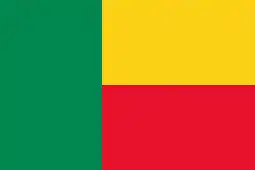 Benin (1964)
Benin (1964) Botswana (1970)
Botswana (1970) Burkina Faso (1973)
Burkina Faso (1973) Burundi (1964)
Burundi (1964) Cameroon (1964)
Cameroon (1964) Cape Verde (1976)
Cape Verde (1976) Central African Republic (1964)
Central African Republic (1964) Chad (1964)
Chad (1964)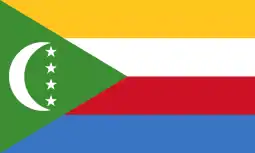 Comoros (1976)
Comoros (1976) Democratic Republic of the Congo (1961)
Democratic Republic of the Congo (1961) Djibouti (1983)
Djibouti (1983) Egypt (1961)
Egypt (1961) Equatorial Guinea (1970)
Equatorial Guinea (1970) Eritrea (1995)
Eritrea (1995) Eswatini (1970)
Eswatini (1970) Ethiopia (1961)
Ethiopia (1961) Gabon (1970)
Gabon (1970) Gambia (1973)
Gambia (1973) Ghana (1961)
Ghana (1961) Guinea (1961)
Guinea (1961) Guinea-Bissau (1976)
Guinea-Bissau (1976)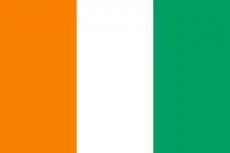 Côte d'Ivoire (1973)
Côte d'Ivoire (1973) Kenya (1964)
Kenya (1964) Lesotho (1970)
Lesotho (1970) Liberia (1964)
Liberia (1964) Libya (1964)
Libya (1964) Madagascar (1973)
Madagascar (1973) Malawi (1964)
Malawi (1964) Mali (1961)
Mali (1961) Mauritania (1964)
Mauritania (1964)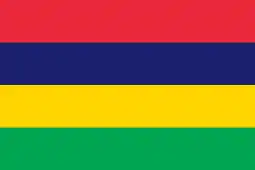 Mauritius (1973)
Mauritius (1973) Morocco (1961)
Morocco (1961)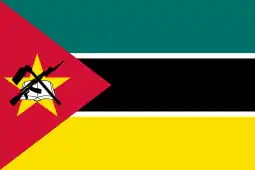 Mozambique (1976)
Mozambique (1976) Namibia (1979)
Namibia (1979) Niger (1973)
Niger (1973) Nigeria (1964)
Nigeria (1964)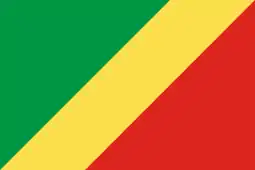 Republic of the Congo (1964)
Republic of the Congo (1964) Rwanda (1970)
Rwanda (1970) São Tomé and Príncipe (1976)
São Tomé and Príncipe (1976) Senegal (1964)
Senegal (1964) Seychelles (1976)
Seychelles (1976) Sierra Leone (1964)
Sierra Leone (1964) Somalia (1961)
Somalia (1961) South Africa (1994)
South Africa (1994)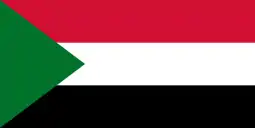 Sudan (1961)
Sudan (1961) Tanzania (1964)
Tanzania (1964) Togo (1964)
Togo (1964) Tunisia (1961)
Tunisia (1961) Uganda (1964)
Uganda (1964) Zambia (1964)
Zambia (1964) Zimbabwe (1979)
Zimbabwe (1979)
Americas
 Antigua and Barbuda (2006)
Antigua and Barbuda (2006) Bahamas (1983)
Bahamas (1983) Barbados (1983)
Barbados (1983) Belize (1981)
Belize (1981) Bolivia (1979)
Bolivia (1979) Chile (1973)
Chile (1973) Colombia (1983)
Colombia (1983) Cuba (1961)
Cuba (1961) Dominica (2006)
Dominica (2006) Dominican Republic (2000)
Dominican Republic (2000) Ecuador (1983)
Ecuador (1983)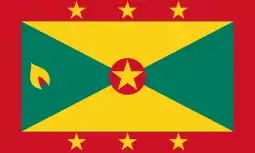 Grenada (1979)
Grenada (1979) Guatemala (1993)
Guatemala (1993) Guyana (1970)
Guyana (1970) Haiti (2006)
Haiti (2006)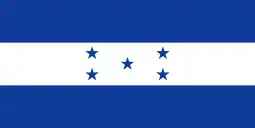 Honduras (1995)
Honduras (1995) Jamaica (1970)
Jamaica (1970) Nicaragua (1979)
Nicaragua (1979) Panama (1976)
Panama (1976) Peru (1973)
Peru (1973) Saint Kitts and Nevis (2006)
Saint Kitts and Nevis (2006) Saint Lucia (1983)
Saint Lucia (1983) Saint Vincent and the Grenadines (2003)
Saint Vincent and the Grenadines (2003) Suriname (1983)
Suriname (1983) Trinidad and Tobago (1970)
Trinidad and Tobago (1970)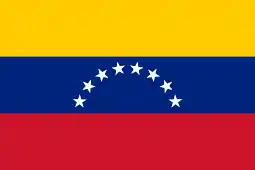 Venezuela (1989)
Venezuela (1989)
Asia
 Afghanistan (1961)
Afghanistan (1961)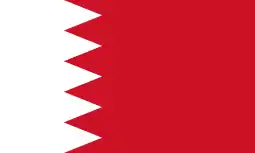 Bahrain (1973)
Bahrain (1973) Bangladesh (1973)
Bangladesh (1973) Bhutan (1973)
Bhutan (1973) Brunei (1993)
Brunei (1993) Cambodia (1961)
Cambodia (1961) India (1961)
India (1961) Indonesia (1961)
Indonesia (1961) Iran (1979)
Iran (1979) Iraq (1961)
Iraq (1961) Jordan (1964)
Jordan (1964)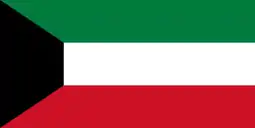 Kuwait (1964)
Kuwait (1964) Laos (1964)
Laos (1964) Lebanon (1961)
Lebanon (1961) Malaysia (1970)
Malaysia (1970) Maldives (1976)
Maldives (1976) Mongolia (1993)
Mongolia (1993) Myanmar (1961)
Myanmar (1961) Nepal (1961)
Nepal (1961) North Korea (1976)
North Korea (1976) Oman (1973)
Oman (1973) Pakistan (1979)
Pakistan (1979) Palestine (1976)
Palestine (1976) Philippines (1993)
Philippines (1993) Qatar (1973)
Qatar (1973) Saudi Arabia (1961)
Saudi Arabia (1961) Singapore (1970)
Singapore (1970) Sri Lanka (1961)
Sri Lanka (1961) Syria (1964)
Syria (1964) Thailand (1993)
Thailand (1993) East Timor (2003)
East Timor (2003) Turkmenistan (1995)
Turkmenistan (1995) United Arab Emirates (1970)
United Arab Emirates (1970) Uzbekistan (1993)
Uzbekistan (1993) Vietnam (1976)
Vietnam (1976)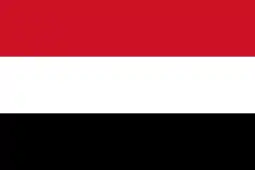 Yemen (1990) [54]
Yemen (1990) [54]
Europe
 Azerbaijan (2011)
Azerbaijan (2011)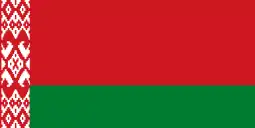 Belarus (1998)
Belarus (1998)
Oceania
 Fiji (2011)
Fiji (2011) Papua New Guinea (1993)
Papua New Guinea (1993)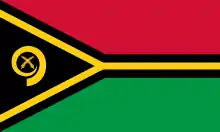 Vanuatu (1983)
Vanuatu (1983)
Former members
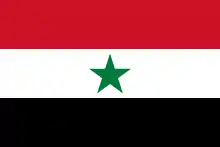 North Yemen (1961–1990)[55]
North Yemen (1961–1990)[55] Cyprus (1961–2004)[56][57]
Cyprus (1961–2004)[56][57].svg.png.webp) Yugoslavia (1961–1992)[18][58][59]
Yugoslavia (1961–1992)[18][58][59] South Yemen (1970–1990)[55]
South Yemen (1970–1990)[55] Malta (1973–2004)[57]
Malta (1973–2004)[57]
Observers
The following countries and organizations have observer status:[2]
Countries
Organisations
- Association of Southeast Asian Nations
- African Union
- Afro-Asian People's Solidarity Organisation
- Arab League
- Commonwealth Secretariat
- Hostosian National Independence Movement
- Kanak and Socialist National Liberation Front
- Organisation of Islamic Cooperation
- South Centre
- United Nations
- World Peace Council
See also
- Asian–African Conference
- Country neutrality
- Dual loyalty
- Five Principles of Peaceful Coexistence
- G-77
- Neutral powers during World War II
- New World Information and Communication Order
- North–South divide
- Policy of deliberate ambiguity
- India and the Non-Aligned Movement
- Yugoslavia and the Non-Aligned Movement
- South-South Cooperation
- Third World
References
- "Coordinating Bureau of the Non-Aligned Countries | UIA Yearbook Profile | Union of International Associations". uia.org. Retrieved 18 July 2020.
- "NAM Members & Observers". Archived from the original on 27 March 2019. Retrieved 20 March 2019.
- "The Non-Aligned Movement: Background Information". Government of Zaire. 21 September 2001. Archived from the original on 9 February 2016. Retrieved 23 April 2011.
- "About NAM". mnoal.org. Non Aligned Movement. Archived from the original on 23 March 2019. Retrieved 20 March 2019.
- Nehru, Jawaharlal (2004). Jawaharlal Nehru. : an autobiography. Penguin Books. ISBN 9780143031048. OCLC 909343858.
- "Non-Aligned Movement | Definition, Mission, & Facts". Encyclopedia Britannica. Retrieved 10 July 2020.
- Petranović, Branko; Zečević, Momčilo (1988). "BEOGRADSKA KONFERENCIJA NEANGAŽOVANIH. NESVRSTANOST - Brionska izjava predsednika Tita, Nasera i Premijera Nehrua, jula 1956." (PDF). Jugoslavija 1918–1988: Tematska zbirka dokumenata (in Serbo-Croatian) (2 ed.). Belgrade: Izdavačka radna organizacija "Rad". pp. 1078–1084. ISBN 9788609001086.
- "Fidel Castro speech to the UN in his position as chairman of the non-aligned countries movement 12 October 1979". Archived from the original on 11 June 2011.
- "Pakistan & Non-Aligned Movement" Archived 2 October 2006 at the Wayback Machine. Board of Investment – Government of Pakistan. 2003.
- Laskar, Rejaul Karim (June 2004). "Respite from Disgraceful NDA Foreign Policy". Congress Sandesh. 6 (10): 8.
- Ma'aroof, Mohammad Khalid (1987). Afghanistan in World Politics: (a Study of Afghan-U.S. Relations). Gyan Publishing House. pp. 75–. ISBN 978-81-212-0097-4.
- "Belgrade declaration of non-aligned countries" (PDF). Egyptian presidency website. 6 September 1961. Archived from the original (PDF) on 8 October 2011. Retrieved 23 April 2011.
- "Fifth conference of heads of state or Government of non-aligned nations" (PDF). Egyptian presidency website. 6 September 1961. Archived from the original (PDF) on 8 October 2011. Retrieved 23 April 2011.
- Suvedi, Sūryaprasāda (1996). Land and Maritime Zones of Peace in International Law. Oxford: Clarendon Press; New York: Oxford University Press. pp. 169–170. ISBN 978-0-198-26096-7.
- Robert E. Quirk, Fidel Castro, (1993) pp 718–21, 782–83
- Pérez, Cuba: Between Reform and Revolution (5th ed. 2015) p 301.
- H. V. Hodson, ed. The annual register : a record of world events 1979 (1980) pp 372–75.
- "The Non-Aligned Movement: Member States" Archived 9 December 2010 at the Wayback Machine. XII Summit, Durban, South Africa, 2–3 September 1998. Retrieved 24 August 2012.
- Lai Kwon Kin (2 September 1992). "Yugoslavia casts shadow over non-aligned summit". The Independent. Retrieved 26 September 2009.
Iran and several other Muslim nations want the rump state of Yugoslavia kicked out, saying it no longer represents the country which helped to found the movement.
- Najam, Adil (2003). "Chapter 9: The Collective South in Multinational Environmental Politics". In Nagel, Stuard (ed.). Policymaking and prosperity: a multinational anthology. Lanham, MD: Lexington Books. pp. 197–240 [233]. ISBN 0-7391-0460-8. Retrieved 10 November 2009.
Turkmenistan, Belarus and Dominican Republic are the most recent entrants. The application of Bosnia and Herzegovina and Costa Rica were rejected in 1995 and 1998.
- Putting Differences Aside Archived 12 April 2012 at the Wayback Machine, Daria Acosta, 18 September 2006.
- Staff (7 August 2009). "Profile: Non-Aligned Movement". BBC News. Retrieved 24 August 2012.
- XII Summit, Durban, South Africa, 2–3 September 1998: Final Document Archived 19 December 2015 at the Wayback Machine, no. 10-11.
- XII Summit, Durban, South Africa, 2–3 September 1998: NAM XII Summit: Basic Documents – Final Document: 1 Global Issues Archived 19 December 2015 at the Wayback Machine. Nam.gov.za. Retrieved 3 August 2013.
- "NAM summit will raise Iran's profile in the international arena". Archived from the original on 28 January 2013.
- "NAM summit kicks off in Tehran". Archived from the original on 29 August 2012.
- "Southern Africa: Media Briefing By Deputy Minister Ebrahim Ebrahim On International Developments". 15 August 2012. Retrieved 18 September 2016 – via AllAfrica.
- "Class 12 Arts stream Political Science #crashcourse: Non-Aligned Movement explained". India Today. Ist.
- "Venezuela seeks support from the Islamic world amid spat with US". www.efe.com.
- "Meeting of the Ministerial Committee on Methodology of the Movement of the Non-Aligned Countries, Caratagena de Indias, May 14–16, 1996". Head of State and Government of the Non-Aligned Countries. Government of Zaire. 14–16 May 1996. Archived from the original on 2 April 2011. Retrieved 24 April 2011.
- "NAM Summits". Non-Aligned Movement. Archived from the original on 31 March 2019. Retrieved 6 April 2019.
Nicolás Maduro Moros, President of the Bolivarian Republic of Venezuela, who was elected by acclamation as Chair of the Non-Aligned Movement (NAM)
- "Suharto tops corruption rankings". BBC News. 25 March 2004. Retrieved 4 February 2006.
- Commission for Reception, Truth and Reconciliation in East Timor Benetech Human Rights Data Analysis Group (9 February 2006). "The Profile of Human Rights Violations in Timor-Leste, 1974–1999". A Report to the Commission on Reception, Truth and Reconciliation of Timor-Leste. Human Rights Data Analysis Group (HRDAG). Archived from the original on 29 May 2012.
- Ohlson, Thomas; Stockholm International Peace Research Institute (1988). Arms Transfer Limitations and Third World Security. Oxford: Oxford University Press. p. 198. ISBN 978-0-198-29124-4.
- Morphet, Sally. "Multilateralism and the Non-Aligned Movement: What Is the Global South Doing and Where Is It Going?". Global Governance: A Review of Multilateralism and International Organizations. 10 (2004), pp. 517–537.
- Grant, Cedric. "Equity in Third World Relations: a third world perspective". International Affairs 71, 3 (1995), 567–587.
- Staff (16 September 2006). "Non-Aligned Nations Slam U.S." CBC News. Retrieved 23 August 2012.
- "No Alineados preparan apoyo a la libre determinación de Puerto Rico" [The Non-Aligned prepare support for Puerto Rico's self-determination] (in Spanish). Radio Cooperativa. 14 July 2009. Retrieved 23 August 2012.
- "3162 (XXVIII) Question of Spanish Sahara. U.N. General assembly 28th session, 1973" Archived 13 January 2012 at the Wayback Machine (PDF format). United Nations.
- XV Summit of heads of state and government of the Non Aligned Movement – Final Document. Sharm El Sheikh, Egypt.16-04-2009. Archived 17 August 2012 at the Wayback Machine See points 237, 238 & 239.
- Statement on the implementation of the Right to Development Archived 9 March 2012 at the Wayback Machine, 7 January 2008.
- XII Summit, Durban, South Africa, 2–3 September 1998: Final Document Archived 19 December 2015 at the Wayback Machine, no. 55.
- Declaration on the occasion of celebrating Human Rights Day Archived 9 March 2012 at the Wayback Machine.
- XII Summit, Durban, South Africa, 2–3 September 1998: The Non-Aligned Movement: Background Information 2.4. Archived 9 February 2016 at the Wayback Machine.
- XV Summit of the Non-Aligned Movement, Sharm El Sheikh, 11–16 July 2009: Previous Summits Archived 8 October 2011 at the Wayback Machine
- "18th Summit of Non-Aligned Movement gets underway in Baku". Official web-site of President of Azerbaijan Republic. Retrieved 30 November 2019.
- Serbia, RTS, Radio televizija Srbije, Radio Television of. "Nesvrstani ponovo u Beogradu". Retrieved 18 September 2016.
- "Secretary-General's Message to Additional Commemorative Meeting of the Non-Aligned Movement – United Nations Secretary-General Ban Ki-moon". 5 September 2011. Retrieved 18 September 2016.
- Jafarova, Esmira (5 May 2020). "Non-Aligned Movement is 'United Against Covid-19'". www.euractiv.com. Retrieved 30 May 2020.
- "Саммит Движения неприсоединения состоялся в формате Контактной группы по инициативе президента Азербайджана_Russian.news.cn". russian.news.cn. Retrieved 30 May 2020.
- Fidel Castro, having recently undergone gastric surgery, was unable to attend the conference and was represented by his younger brother, Cuba's acting president Raúl Castro. See "Castro elected President of Non-Aligned Movement Nations". People's Daily. 16 September 2006.
- In a joint letter to the UN Secretary-General sent just prior to unification, the Ministers of Foreign affairs of North and South Yemen stated that "All treaties and agreements concluded between either the Yemen Arab Republic or the People's Democratic Republic of Yemen and other States and international organizations in accordance with international law which are in force on 22 May 1990 will remain in effect, and international relations existing on 22 May 1990 between the People's Democratic Republic of Yemen and the Yemen Arab Republic and other States will continue."Bühler, Konrad (2001). State Succession and Membership in International Organizations. Martinus Nijhoff Publisher. ISBN 9041115536.
-
 North Yemen is one of the founders in 1961.
North Yemen is one of the founders in 1961.  South Yemen joined in 1970. In 1990 both were unified into a single state which accepted responsibility for all treaties of its predecessors.[53]
South Yemen joined in 1970. In 1990 both were unified into a single state which accepted responsibility for all treaties of its predecessors.[53] - Bühler, Konrad (2001). State Succession and Membership in International Organizations. Martinus Nijhoff Publisher. ISBN 9041115536.
- "Cyprus and the Non – Aligned Movement". Ministry of Foreign Affairs, Republic of Cyprus. Archived from the original on 23 March 2014. Retrieved 23 March 2014.
- "XIV Ministerial Conference of the Non-Aligned Movement". South Africa Ministry for Foreign Affairs. Archived from the original on 1 June 2013. Retrieved 23 March 2014.
- "Final Document of the 7th Summit of the Non-Aligned Movement -(New Delhi Declaration)" (PDF). Archived from the original (PDF) on 8 October 2011. Retrieved 18 September 2016.
- Kin, Lai Kwok (2 September 1992). "Yugoslavia Casts Shadow over Non-Aligned Summit". The Independent. Reuters. Retrieved 24 August 2012.
- XII Summit, Durban, South Africa, 2–3 September 1998: The Non-Aligned Movement: Background Information 4.4. Archived 9 February 2016 at the Wayback Machine
Further reading
| Library resources about Non-Aligned Movement |
- Jürgen Dinkel, The Non-Aligned Movement. Genesis, Organization and Politics (1927–1992), New Perspectives on the Cold War 5, Brill: Leiden/Boston 2019. ISBN 978-90-04-33613-1.
- Hans Köchler (ed.), The Principles of Non-Alignment. The Non-aligned Countries in the Eighties—Results and Perspectives. London: Third World Centre, 1982. ISBN 0-86199-015-3
External links
- Official website
- 18th Summit Eighteenth Non-Aligned Movement Summit (Baku 2019)
- Official Site: 17th Summit – Seventeenth Non-Aligned Movement Summit (Margarita, Venezuela 2016)
- Official Site: 16th Summit – Sixteenth Non-Aligned Movement Summit (Tehran 26–31 August 2012)
- Official Site: 15th Summit – Fifteenth Non-Aligned Movement Summit (Sharm el-Sheikh 11–16 July 2009)
- Official Site: 14th Summit – Fourteenth Non-Aligned Movement Summit (Havana, 11–16 September 2006)
- Non-Aligned Movement – South African government NAM site
- International Institute for Non-Aligned Studies – International Organization for Non-Aligned Movement
- The Cold War International History Project's Document Collection on the NAM

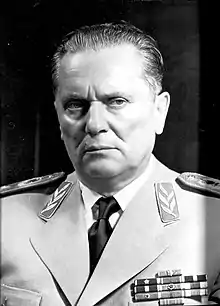




.jpg.webp)



.jpg.webp)


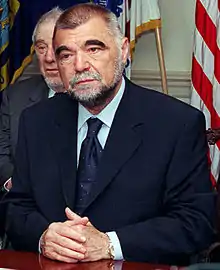

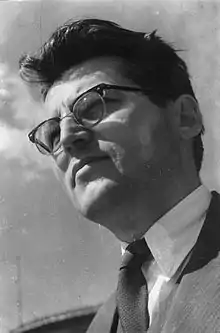

.jpg.webp)

_(cropped).jpg.webp)

.jpg.webp)



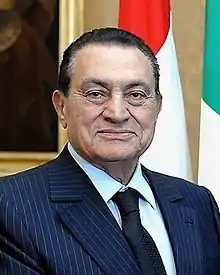
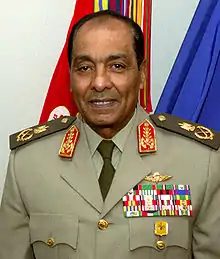

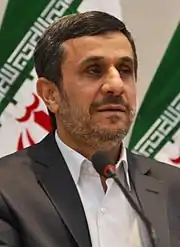

_cropped.jpg.webp)
.jpg.webp)